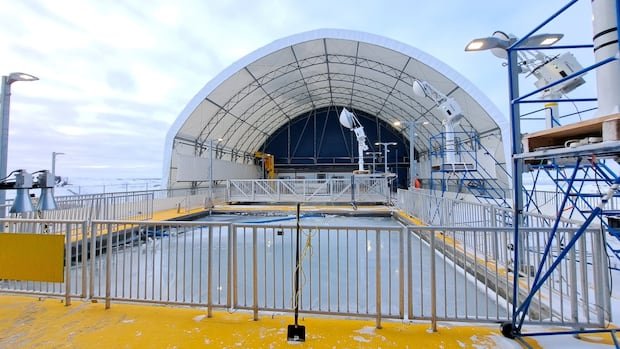A recently proven natural solution used to combat oil spills may not be efficient in addressing potential oil spills in the Canadian Arctic, leading to a heightened risk of significant environmental damage, according to researchers. The GenIce II team, spearheaded by Eric Collins from the University of Manitoba, has discovered that oil-degrading microbes in Arctic waters exhibit sluggish response times to oil contamination, taking several weeks to a month to initiate oil breakdown processes. This delay is deemed impractical in real oil spill scenarios, emphasizing the need for improved intervention strategies.
The GenIce II research initiative, which commenced operations at a state-of-the-art $45-million observatory in Churchill, Manitoba, focuses on investigating the repercussions of potential oil spills in the Arctic marine ecosystem. Following the wake-up call prompted by the 2010 Deepwater Horizon disaster, Collins and his team are concentrating on understanding how natural microbial communities in the Arctic react to oil pollution, distinct from responses observed in warmer regions like the Gulf of Mexico.
As Arctic ice continues to melt, prolonging the shipping season in Hudson Bay and projecting an uptick in shipping activities, experts warn of an escalating risk of oil spills. Collins particularly highlights concerns about nearshore spills due to the Hudson Bay’s current circulation patterns, which could disseminate contamination along the coastline, endangering ecosystems vital to local communities reliant on the environment for sustenance.
The GenIce II project, facilitated by the Churchill Marine Observatory, enables controlled experiments simulating Arctic water conditions. By utilizing two pools, one uncontaminated and the other exposed to oil, the research team assesses microbial responses to oil contamination in a controlled setting. The facility’s wastewater treatment system ensures the water’s cleanliness before it is released back into the ocean post-experimentation.
Feiyue Wang, the head of the Churchill Marine Observatory, emphasizes the facility’s unique capability to conduct controlled experiments in natural Arctic waters, attracting global interest and fostering potential collaborations with international researchers. Wang underscores the imperative of proactive research in light of rapid Arctic environmental transformations, with Hudson Bay projected to become ice-free by the century’s end.
Despite delays in the observatory’s construction, attributed to various challenges, the facility’s relocation and operationalization mark a significant milestone in advancing Arctic research. Efforts to incorporate traditional Indigenous knowledge and community engagement further enhance the observatory’s research initiatives, ensuring a holistic approach to addressing environmental concerns.
Moving forward, the GenIce II team plans to expand their oil spill research during upcoming expeditions to the marine observatory, building on their current findings to enhance understanding and preparedness for potential Arctic oil spill scenarios.


